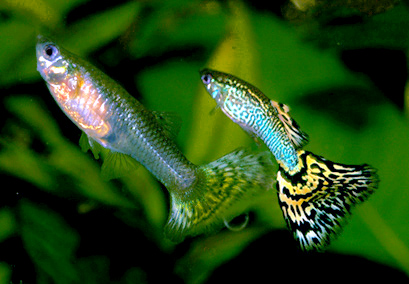So what do we know about animals in terms of degree? Lusseau and Newman (2004) showed that in a bottlenose dolphins population in New Zealand there is no assortative mixing by degree, i.e. dolphins having high degree do not preferentially attach to other dolphins with high degree. This is opposed to findings in humans, where assortative mixing is common. The dolphin network suggests that preferential attachment is not strong in their network evolution, meaning that the network was not formed by the connection of new members to central members. An additional finding of this study is that the network is robust to the loss of high-degree members. In other words, there are many redundant paths in the network, allowing it to withstand removal of central figures.
In a newer paper Lusseau et al. (2006) report some degree homophily in a bottlenose dolphin population in Scotland. It is difficult to say if the difference in these results reflects a real difference in the social structure of different dolphin populations or is an artefact of some methodological inconsistencies.
Croft et al. (2005) did find assortative interactions in a study of multiple guppy populations and one three-spined stickleback population. The degree of individual fish was positively correlated with the average degree of their network neighbors. The authors suggest that could cause faster spreading of information, but also of pathogens, among populations. Although this study was performed on multiple populations, we'll need more data in order to state that assortative interactions are common in animals.
 |
| Guppies |
A different kind of study compared the networks of onagers and Grevy's zebras (Sundaresan et al. 2007), and found that onagers have higher degree than zebra, i.e. they associate with more partners. Interestingly, when testing only preferred associations (after statistically testing which associations are more common than expected by chance), such differences were absent. This shows that these two species do not differ in the amount of significant associations each individual has.
Wolf et al. (2007) studied social networks of the Galapagos sea lion. I have reviewed a recent work by them in an earlier post. They found that males had lower average degree than females. The authors suggest that since females are less aggressive than males and show more fidelity to a specific location they may be able to form more associations.
As can be seen, we have only began to scratch the surface of what we can learn from the degrees of individuals. The described papers currently do not lead to any conclusion regarding other species, or even other populations. I will end this post here and continue in part 2.
